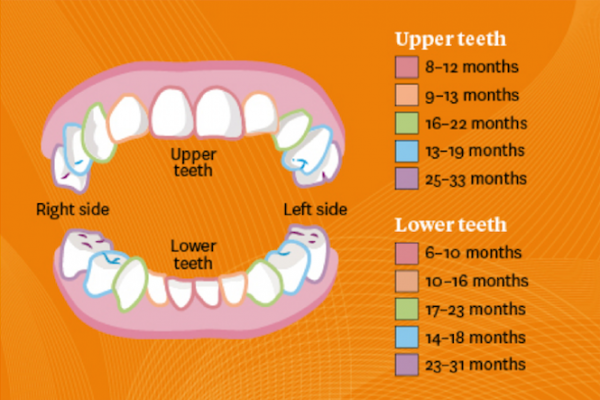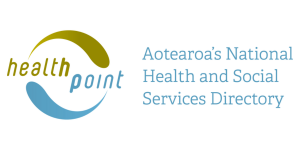For information and support about teething – talk to your doctor, pharmacist, practice nurse or Plunket nurse. You can also phone Healthline free (within New Zealand) on 0800 611 116 for health advice. Calls are answered by registered nurses or other health professionals.
Most children will get their first tooth between the age of 6 and 10 months, although some children will be earlier and some later. The lower (bottom) front teeth usually come through the gum first. These are followed by the upper (top) front teeth. The picture below shows when each tooth usually appears.

Image credit: Ministry of Health, NZ






